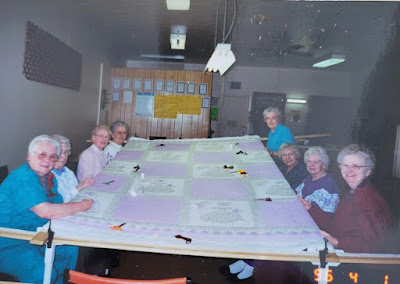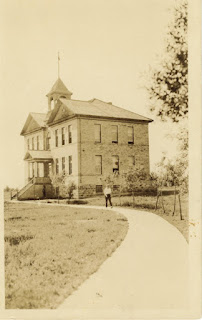Located at 309 Second Avenue in Reston, the Al-Res-Tone Drop In Centre has been at this spot since 1977. Two buildings in this same location have been the scene of many hours of community recreation and socialization. Here's what I know today and please let me know what I'm missing.
John Rainnie purchased a building as army surplus and moved it to this lot in about 1970 where the Reston Recorder and Alfred Archer’s Tailor and Dry Cleaner Shop had recently been demolished. He set up as Rainnie's Lumber and Supplies in the long narrow building and carried on business for a few years. In 1977, John sold it to a Seniors Club headed by President Art Smith with Rev. Ernie Schurman as Secretary-treasurer. Roy Campbell was vice-president of this group who were on the hunt for a space for the community to use for various purposes. It was not exclusively for Seniors, anyone over the age of 16 was welcome to purchase a membership in 1981 for $10/year. Youth were welcomed to play pool and learn a thing or two from their elders. The Reston Seniors club even hosted their Westman Winter Games from this building in 1981. Quilters used the facility faithfully every week like the group from 1996 in Laura Osterbeck’s picture below. Thanks Laura!
Ongoing fundraising events, grants and generous donations saw the building being used for many years until its condition was deemed too far gone to fix. Walker Construction was hired to demolish the old and build a new 26 x 70 foot building on the same spot in 2002 at a cost of $92 000. I was lucky enough to spot the following news article in the archive Reston Recorders from the summer of 2002.
 | ||
Clipping from Reston Recorder June 29, 2002
|
Generous community members gave support and the new building was quickly built. Pool tables, shuffleboard, carpet ball, card tables, public rest rooms and office space for Seniors Helping Hands were all part of the design. It is an interesting read to look back at the names on the plaques of the past members and supporters. I was able to do that this week with a friendly game of pool going on in the background .

 |
| Certificates of Seniors Games Accomplishments line the walls of the Drop In |
President Elwyn McConnell welcomed everyone to the Opening Ceremony on December 9, 2002. John Pearson cut the ribbon and Gwen Martin and Ethel Walker cut the cake. The building was fully paid for shortly after. Many anniversaries, showers, birthdays and special occasions were celebrated and continue to be within the walls of the Drop In. Thanks to volunteer board members, the Al-Res-Tone Drop In continues to hold an important place in our community.






















